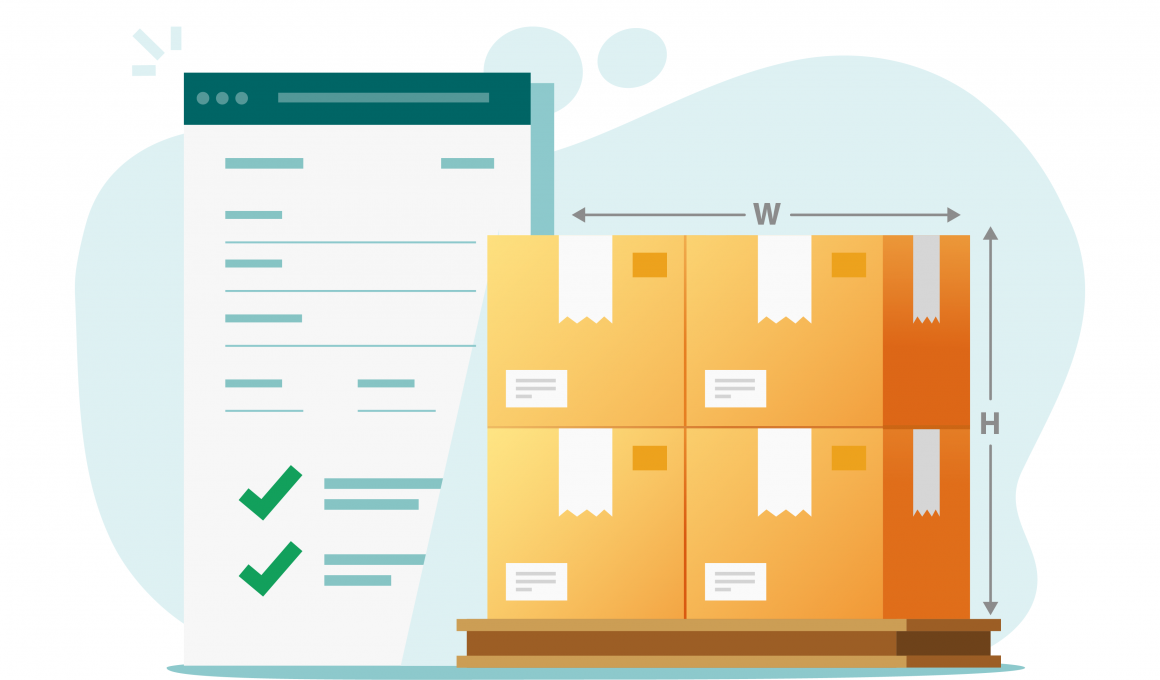When it comes to shipping parcels, global shipping giants like FedEx and UPS determine the pricing based on dimensional weight.
If you need to ship orders for your e-commerce business and work directly with FedEx/UPS, or partner with a third-party logistics (3PL) company, you will likely come across this pricing method.
In this post, we would discuss dimensional weight and its effects on the pricing of packages.
Defining Dimensional Weight
Dimensional weight or DIM weight is a pricing method that shipping carriers use for transporting parcels. Carriers calculate the dimensional weight by multiplying length, width, and height.
The core concept behind DIM weight is space management. Since the delivery truck has limited space, shipping carriers use the dimensional weight of parcels to determine their density and shipping rates. It means that even if you are shipping a lightweight parcel, the DIM weight will still apply.
FedEx and UPS calculate shipping costs considering whichever is greater between the actual weight of a parcel and the calculated DIM.
How to Calculate Dimensional Weight Pricing
The calculation of dimensional weight includes the multiplication of the length, width, and height of a parcel, considering its longest points on both sides. Subsequently, they calculate the cubic size of the parcel (in inches) to find out the DIM weight in pounds (lbs).
Here are the steps for calculating dimensional weight:
- In the first step, carriers measure the length, width, and height of a parcel, considering its longest point on both sides. During the measurement, they check the bulges or misalignment in the parcels, as these issues can result in additional handling fees if the initial calculations are not correct.
- While calculating DIM weight, both the shipping carriers suggest to round up to the closest whole number.
DIM Weight for Domestic & International Shipping (Source: www.efulfillmentservice.com)
- In this step, carriers multiply the dimensions to find out the cubic size of the parcels. For example, if the measurement of your parcel is 30” x 12” x 12”, the size of your parcel will be the multiplication of these three measurements, which is 4,320 cubic inches.
- The final calculation involves dividing a parcel’s cubic size with a dimensional factor or a DIM divisor. FedEx and UPS set DIM divisors, which are factors representing cubic inches per pound.
For example, FedEx currently uses the DIM divisor for both domestic and international shipping is 139 cubic inches/pound. If we use the above example, you can get the DIM weight of 31 pounds by dividing 4,320 with 139.
Here is in brief how a carrier charges for a parcel:
If the weight of a parcel is below 31 pounds (e.g., 28 or 29 pounds), the carrier will consider the DIM weight of 31 pounds and will charge for the same since it is the greater number.
In another example, if the weight of a parcel is over 31 pounds (e.g., 32 or 33 pounds), the carrier will charge on the DIM weight considering the actual weight, since it is the greater number.
From another perspective of FedEx and Ups, lightweight parcels take up the same space as heavy ones. Due to this, carriers potentially lose money by shipping lightweight packages.
To increase their profit, carriers consider a parcel’s weight according to its dimensions (length x width x height) instead of its actual weight. The outcome is DIM weight pricing.
What to do about DIM Weighted Shipments for E-commerce?
Now, a relevant question is what can you do to protect your e-commerce business against these shipping costs? Well, the first thing you can do is to ensure that you know the accurate DIM weight of the parcels you are shipping. Visit the websites of FedEx and UPS to understand how to calculate the DIM weight.
Subsequently, you need to reevaluate your packages, particularly the large, lightweight ones. Think if you can reduce the size of your shipping boxes. Figure out the shipping cost for multiple boxes or sending your parcels in a non-assembled form. Reducing the size of the boxes even by an inch or two can lower your overall cost.
How Do FedEx and UPS Calculate Dimensional Weight
Both FedEx and UPS calculate DIM weight a bit differently. Here is what these two major carriers consider while calculating the dimensional weight of packages:
FedEx DIM Weight Calculation
Length (inches):
Width (inches):
Height (inches):
Dimensional Weight: pounds
UPS DIM Weight Calculation
Select “Personal” or “Retail:”
Length (inches):
Width (inches):
Height (inches):
Dimensional Weight: lbs
What is Dimensional weight pricing errors?
Dimensional weight pricing error occurs when the billable weight is calculated wrong. It usually occurs when a carrier assigns the wrong dimension or due to poor packaging. One of the best indicators of DIM weight pricing errors if the difference between actual weight and billed weight is disproportionately high.
With AuditShipment’s dedicated auditing platform, clamp down on every Dim weight pricing error and get rid of charges that are sinking your shipping costs.
Closing Words
We hope this article has helped you with useful insights into the concept of dimensional weight pricing. If you are looking to streamline your e-commerce shipping method and lower expenses, partnering with a leading fulfillment company is a good idea.






